实验3:OpenFlow协议分析实践
1.基础要求
a)/home/用户名/学号/lab3/目录下的拓扑文件
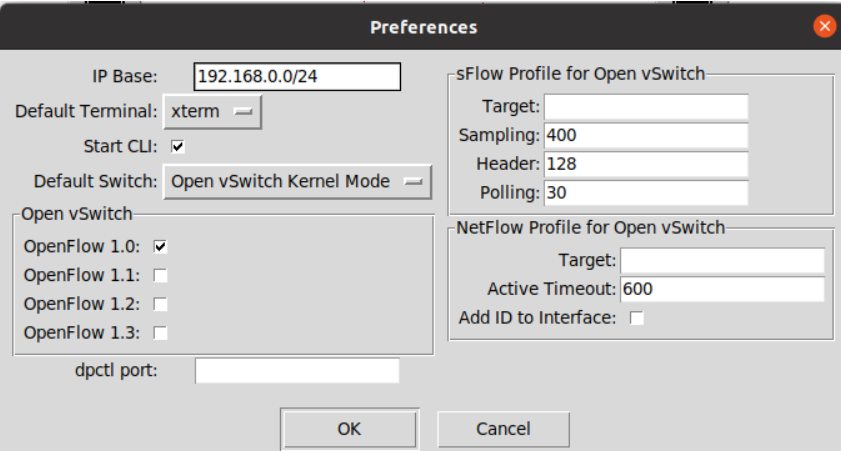
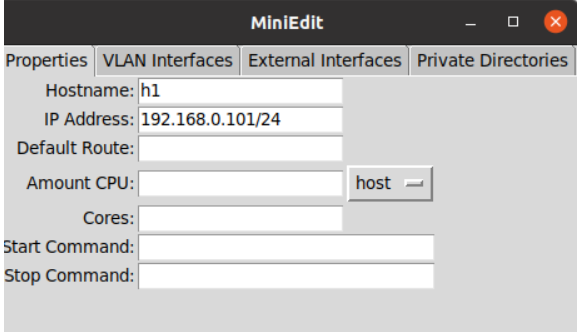
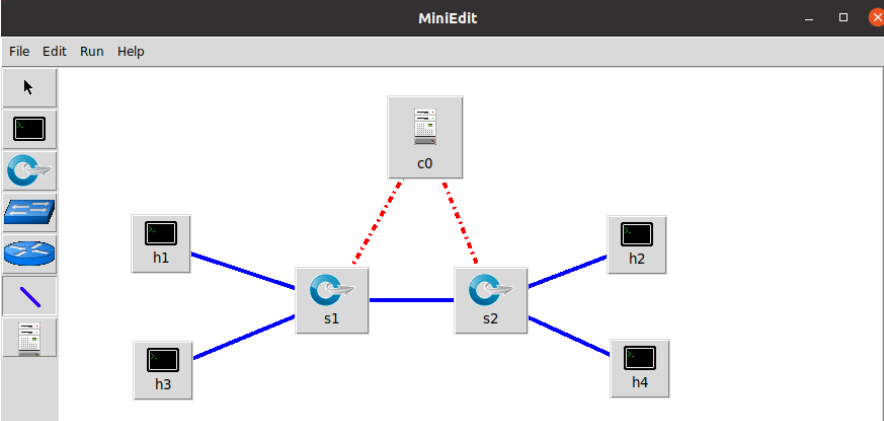
b)wireshark抓包的结果截图和对应的文字说明
- Hello
控制器6633端口(我最高能支持OpenFlow 1.0) ---> 交换机406306端口
![]()
交换机46306端口(我最高能支持OpenFlow 1.0) ---> 控制器6633端口
![]()
- Features Request
控制器6633端口(我需要你的特征信息) ---> 交换机46306端口
![]()
- Set Conig
控制器6633端口(请按照我给你的flag和max bytes of packet进行配置) ---> 交换机46306端口
![]()
- Port Status
当交换机端口发生变化时,告知控制器相应的端口状态。
![]()
- Features Reply
Features Reply消息包括Openflow Header 和Features Reply Message
交换机46306端口(这是我的特征信息,请查收) ---> 控制器6633端口
![]()
- Packet in
有两种情况会触发交换机向控制器发送 Packet-in 消息:
当交换机收到一个数据包后,查找流表。如果流表中有匹配条目,则交换机按照流表所指示的 action 列表处理数据包。如果没有,则交换机将数据包封装在 Packet-in 消息中发送给控制器处理,注意这时候数据包仍然会被放进缓冲区等待处理而不是被丢弃。
数据包在流表中有匹配的条目,但是其中所指示的 action 列表中包含转发给控制器的动作(Output = CONTROLLER),注意这时候数据包不会被放进缓冲区。
交换机46306端口(有数据包进来,请指示)--- 控制器6633端口
![]()
- Packet out
不是所有的数据包都需要向交换机中添加一条流表项来匹配处理,网络中有些数据包出现的数量很少(如ARP、 IGMP等),没必要通过流表项来指定这一类数据包的处理方法。此时可使用 Packet-Out 消息,告诉交换机某一个数据包如何处理。
控制器6633端口(请按照我给你的action进行处理) ---> 交换机46306端口
![]()
- Flow mod
控制器收到 Packet‐in 消息后,可以发送 Flow‐Mod 消息向交换机写一个流表项。并且将 Flow‐Mod 消息中的 buffer_id 字段设置为 Packet‐in 消息中的 buffer_id 值。从而控制器向交换机写入了一条与数据包相关的流表项,并且指定该数据包按照此流表项的 action 列表处理。
Flow-Mod 消息共有五种类型:
ADD,用来添加一条新的流表项
DELETE,用来删除所有符合一定条件的流表项
DELETE-STRICT,用来删除某一条指定的流表项
MODIFY,用来修改所有符合一定条件的流表项
MODIFY-STRICT,用来修改某一条指定的流表项
以上五种类型对应的数值分别为0-4
控制器通过6633端口向交换机46314端口下发流表项,指导数据的转发处理
![]()
![]()
c)OpenFlow协议中交换机与控制器的消息交互过程,画出相关交互图或流程图
![]()
d)交换机与控制器建立通信时是使用TCP协议还是UDP协议?
使用的是TCP协议,如下图
![]()
2.进阶要求
- Hello
![]()
/* Header on all OpenFlow packets. */
struct ofp_header {
uint8_t version; //版本号 /* OFP_VERSION. */
uint8_t type; //消息类型 /* One of the OFPT_ constants. */
uint16_t length; //长度 /* Length including this ofp_header. */
uint32_t xid; //id /* Transaction id associated with this packet.
Replies use the same id as was in the request
to facilitate pairing. */
};
OFP_ASSERT(sizeof(struct ofp_header) == 8);
/* OFPT_HELLO. This message has an empty body, but implementations must
* ignore any data included in the body, to allow for future extensions. */
struct ofp_hello {
struct ofp_header header;
};
- Features Request
![]()
struct ofp_header {
uint8_t version; /* OFP_VERSION. */
uint8_t type; /* One of the OFPT_ constants. */
uint16_t length; /* Length including this ofp_header. */
uint32_t xid; /* Transaction id associated with this packet.
Replies use the same id as was in the request
to facilitate pairing. */
};
//该参数与hello报文结构相同
- Set Config
![]()
enum ofp_config_flags {
/* Handling of IP fragments. */
OFPC_FRAG_NORMAL = 0, /* No special handling for fragments. */
OFPC_FRAG_DROP = 1, /* Drop fragments. */
OFPC_FRAG_REASM = 2, /* Reassemble (only if OFPC_IP_REASM set). */
OFPC_FRAG_MASK = 3
};
//flag不同的值代表不同的处理方式
/* Switch configuration. */
struct ofp_switch_config {
struct ofp_header header;
uint16_t flags; //用来指示交换机如何处理 IP 分片数据包 /* OFPC_* flags. */
uint16_t miss_send_len; //用来指示当一个交换机无法处理的数据包到达时,将数据包发给控制器的最大字节数。 /* Max bytes of new flow that datapath should
send to the controller. */
};
OFP_ASSERT(sizeof(struct ofp_switch_config) == 12);
- Port Status
![]()
/* A physical port has changed in the datapath */
struct ofp_port_status {
struct ofp_header header;
uint8_t reason; /* One of OFPPR_*. */
uint8_t pad[7]; /* Align to 64-bits. */
struct ofp_phy_port desc;
};
OFP_ASSERT(sizeof(struct ofp_port_status) == 64);
//这个是当交换机端口发生变化时,告知控制器相应的端口状态
//发生变化包括增加、删除、修改物理端口,则需发送port status来告知
- Features Reply
![]()
/* Switch features. */
struct ofp_switch_features {
struct ofp_header header;
uint64_t datapath_id; //唯一标识ID号/* Datapath unique ID. The lower 48-bits are for
a MAC address, while the upper 16-bits are
implementer-defined. */
uint32_t n_buffers; //缓冲区可缓存的最大数据包个数 /* Max packets buffered at once. */
uint8_t n_tables; //流表数量/* Number of tables supported by datapath. */
uint8_t pad[3]; /* Align to 64-bits. */
/* Features. */
uint32_t capabilities; //支持的特殊功能 /* Bitmap of support "ofp_capabilities". */
uint32_t actions; //支持的动作 /* Bitmap of supported "ofp_action_type"s. */
/* Port info.*/
struct ofp_phy_port ports[0]; //物理端口描述列表 /* Port definitions. The number of ports
is inferred from the length field in
the header. */
};
OFP_ASSERT(sizeof(struct ofp_switch_features) == 32);
物理端口描述列表如下图

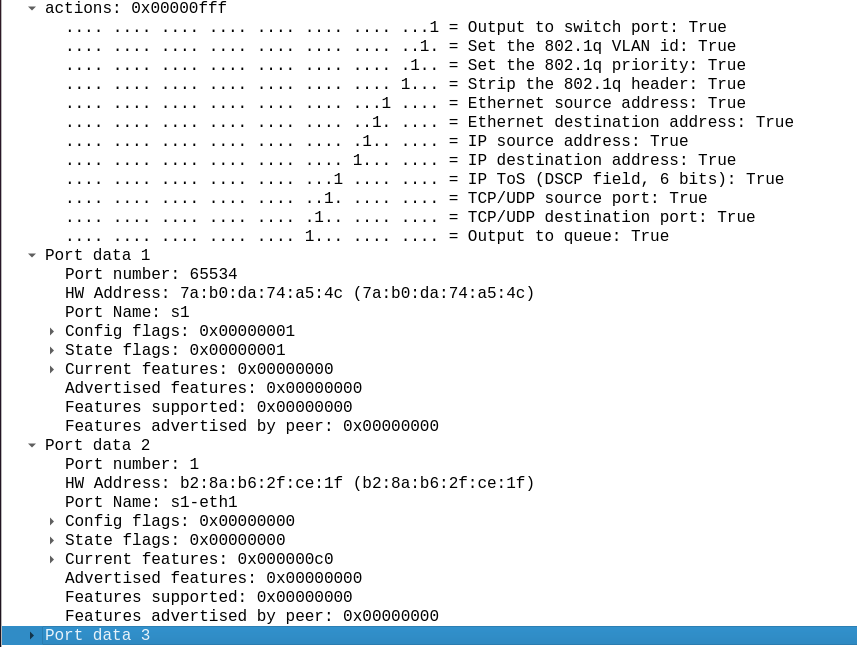
- Packet-in
![]()
/* Why is this packet being sent to the controller? */
enum ofp_packet_in_reason {
OFPR_NO_MATCH, /* No matching flow. */
OFPR_ACTION /* Action explicitly output to controller. */
};
//分析抓取的数据包,可以发现是因为交换机发现此时自己并没有匹配的流表(Reason: No matching flow (table-miss flow entry) (0)),所以要问控制器如何处理
//第一行是没有匹配的条目,第二行是action列表中包含转发给控制器的动作。
//两种情况:1.交换机查找流表,发现没有匹配条目,但是这种包没有抓到过2.有匹配条目,对应的action是OUTPUT=CONTROLLER,固定收到向控制器发送包(分别是这上下两段代码)
/* Packet received on port (datapath -> controller). */
struct ofp_packet_in {
struct ofp_header header;
uint32_t buffer_id; //Packet-in消息所携带的数据包在交换机缓存区中的ID /* ID assigned by datapath. */
uint16_t total_len; //data字段的长度 /* Full length of frame. */
uint16_t in_port; //数据包进入交换机时的端口号 /* Port on which frame was received. */
uint8_t reason; //发送Packet-in消息的原因 /* Reason packet is being sent (one of OFPR_*) */
uint8_t pad;
uint8_t data[0]; //携带的数据包 /* Ethernet frame, halfway through 32-bit word,
so the IP header is 32-bit aligned. The
amount of data is inferred from the length
field in the header. Because of padding,
offsetof(struct ofp_packet_in, data) ==
sizeof(struct ofp_packet_in) - 2. */
};
OFP_ASSERT(sizeof(struct ofp_packet_in) == 20);
- Flow-Mod
![]()
/* Flow setup and teardown (controller -> datapath). */
struct ofp_flow_mod {
struct ofp_header header;
struct ofp_match match; //流表的匹配域 /* Fields to match */
uint64_t cookie; // 流表项标识符 /* Opaque controller-issued identifier. */
/* Flow actions. */
uint16_t command; //可以是ADD,DELETE,DELETE-STRICT,MODIFY,MODIFY-STRICT /* One of OFPFC_*. */
uint16_t idle_timeout; //空闲超时时间 /* Idle time before discarding (seconds). */
uint16_t hard_timeout; //最大生存时间 /* Max time before discarding (seconds). */
uint16_t priority; //优先级,优先级高的流表项优先匹配 /* Priority level of flow entry. */
uint32_t buffer_id; //缓存区ID ,用于指定缓存区中的一个数据包按这个消息的action列表处理 /* Buffered packet to apply to (or -1).
Not meaningful for OFPFC_DELETE*. */
uint16_t out_port; //如果这条消息是用于删除流表则需要提供额外的匹配参数 /* For OFPFC_DELETE* commands, require
matching entries to include this as an
output port. A value of OFPP_NONE
indicates no restriction. */
uint16_t flags; //标志位,可以用来指示流表删除后是否发送flow‐removed消息,添加流表时是否检查流表重复项,添加的流表项是否为应急流表项。 /* One of OFPFF_*. */
struct ofp_action_header actions[0]; //action列表/* The action length is inferred
from the length field in the
header. */
};
OFP_ASSERT(sizeof(struct ofp_flow_mod) == 72);
- Packet-out
![]()
/* Send packet (controller -> datapath). */
struct ofp_packet_out {
struct ofp_header header;
uint32_t buffer_id; //交换机缓存区id,如果为-1则指定的为packet-out消息携带的data字段 /* ID assigned by datapath (-1 if none). */
uint16_t in_port; //如果buffer_id为‐1,并且action列表中指定了Output=TABLE的动作,in_port将作为data段数据包的额外匹配信息进行流表查询
/* Packet's input port (OFPP_NONE if none). */
uint16_t actions_len; //action列表的长度,可以用来区分actions和data段 /* Size of action array in bytes. */
struct ofp_action_header actions[0]; //动作列表 /* Actions. */
/* uint8_t data[0]; */ // 数据缓存区,可以存储一个以太网帧,可选 /* Packet data. The length is inferred
from the length field in the header.
(Only meaningful if buffer_id == -1.) */
};
OFP_ASSERT(sizeof(struct ofp_packet_out) == 16);
3.个人总结
a)实验感想
这次的实验难度不大,重点就是理解和分析OpenFlow 交换机与控制器交互过程。同时掌握通过抓包软件来查看相对应的消息类型和版本号、id号等信息。进阶要求就是在文档中打开源代码进行分析,进一步对OpenFlow主要消息类型的对应数据结构定义有所了解,掌握了OpenFlow通讯过程中数据包的流动过程。在网上查阅资料的时候,也学到了很多知识。并且和所学的路由知识能相呼应上,在 Wireshark 抓包流程上更加熟悉。
b)实验过程中问题及解决办法
这次实验中的出错、排错比较少,主要要注意的地方是要记得在创建拓扑之前开启抓包软件,然后选择any。创建完拓扑之后,再选择过滤器去抓取相对应的报文进行解析。




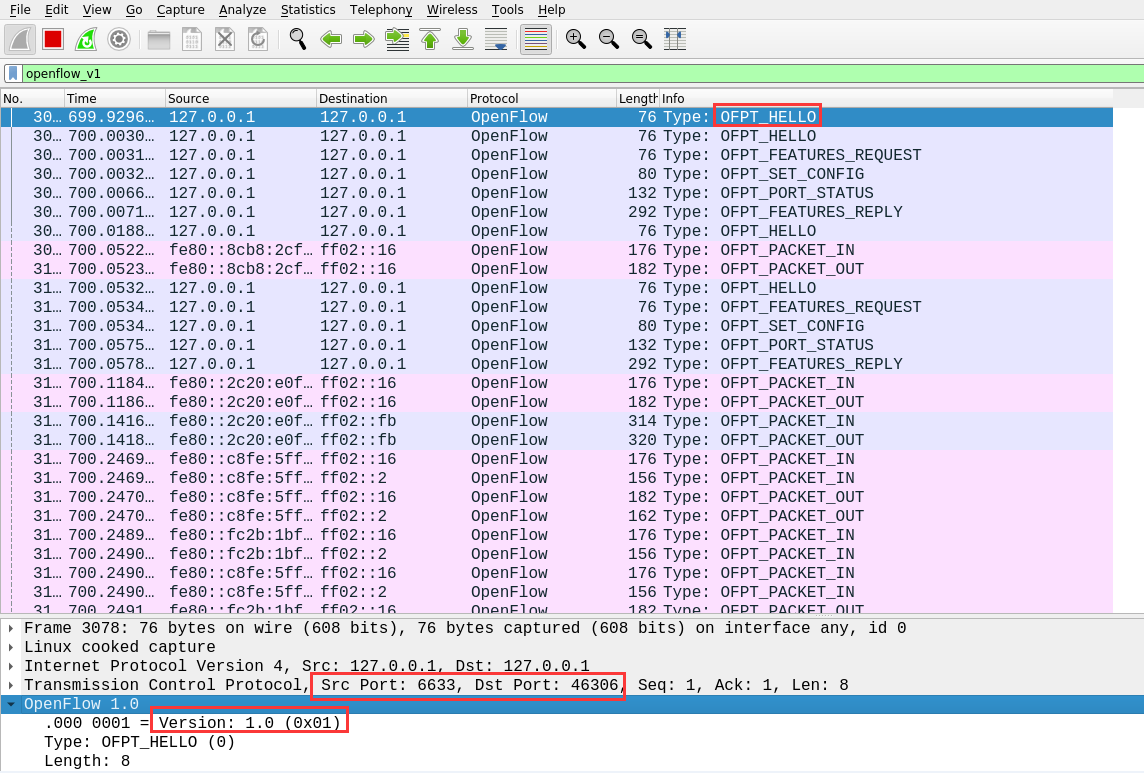

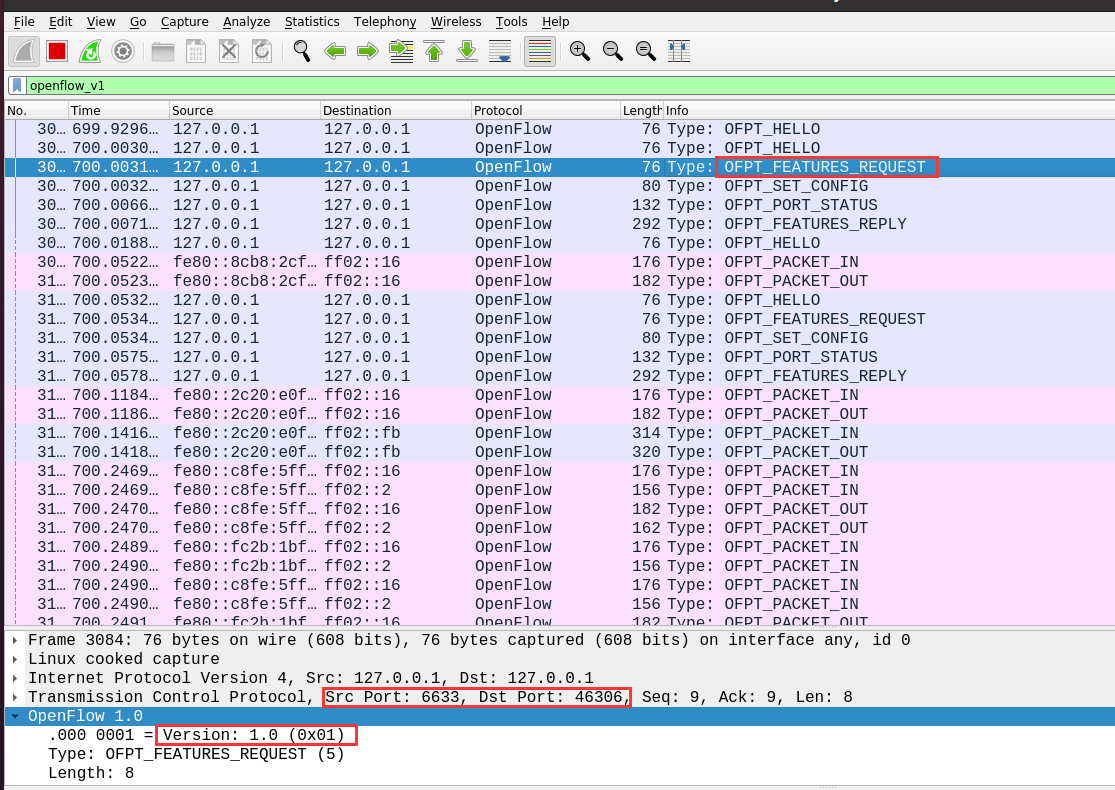
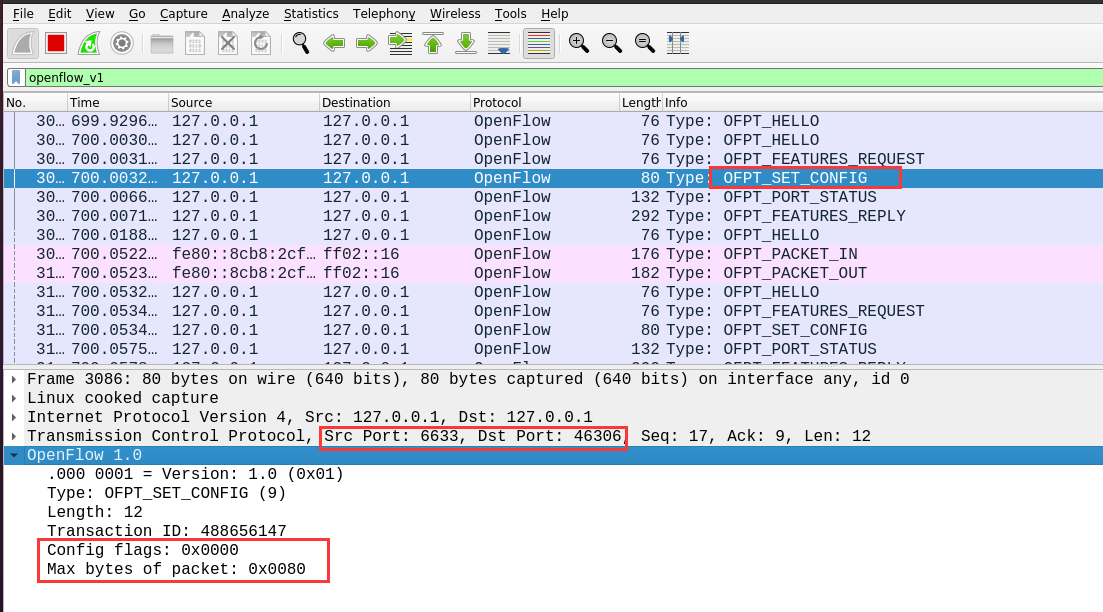
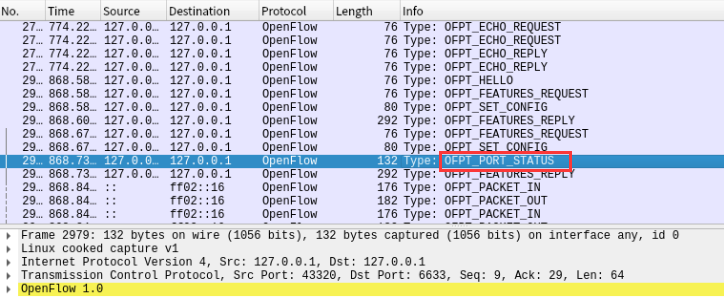

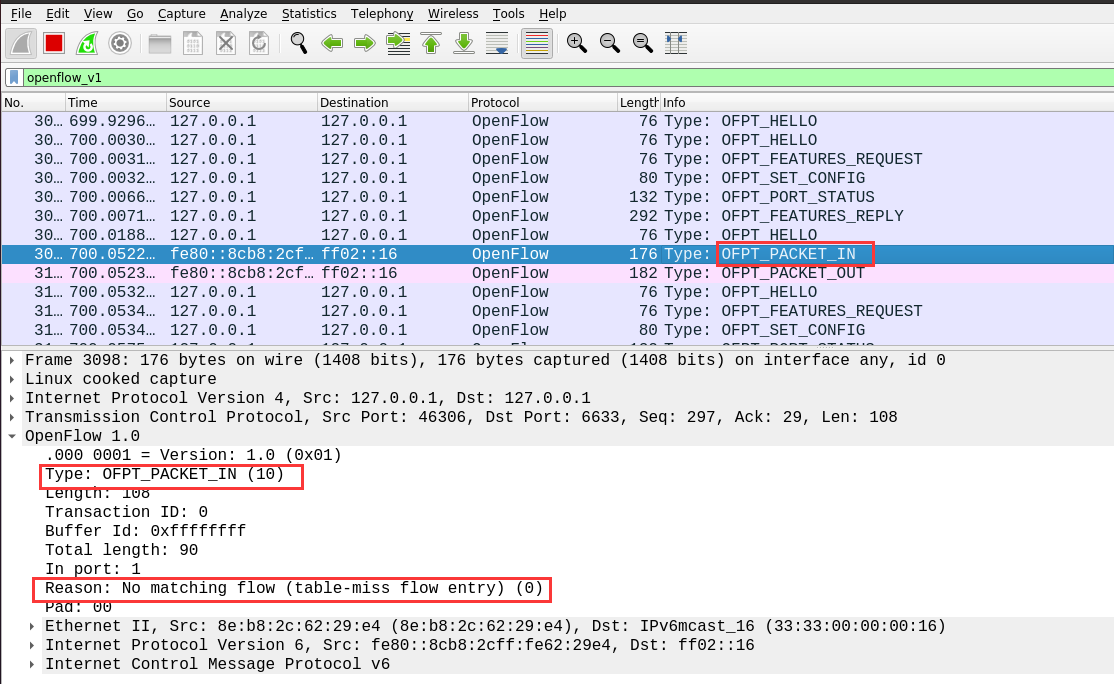
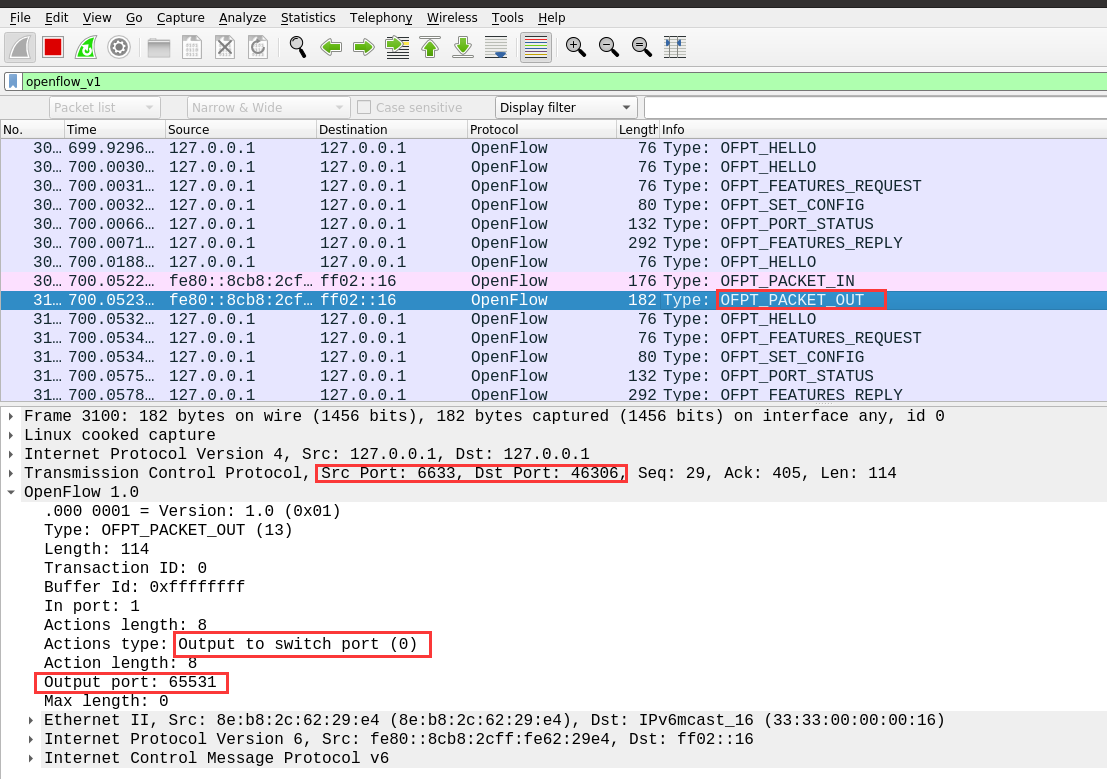
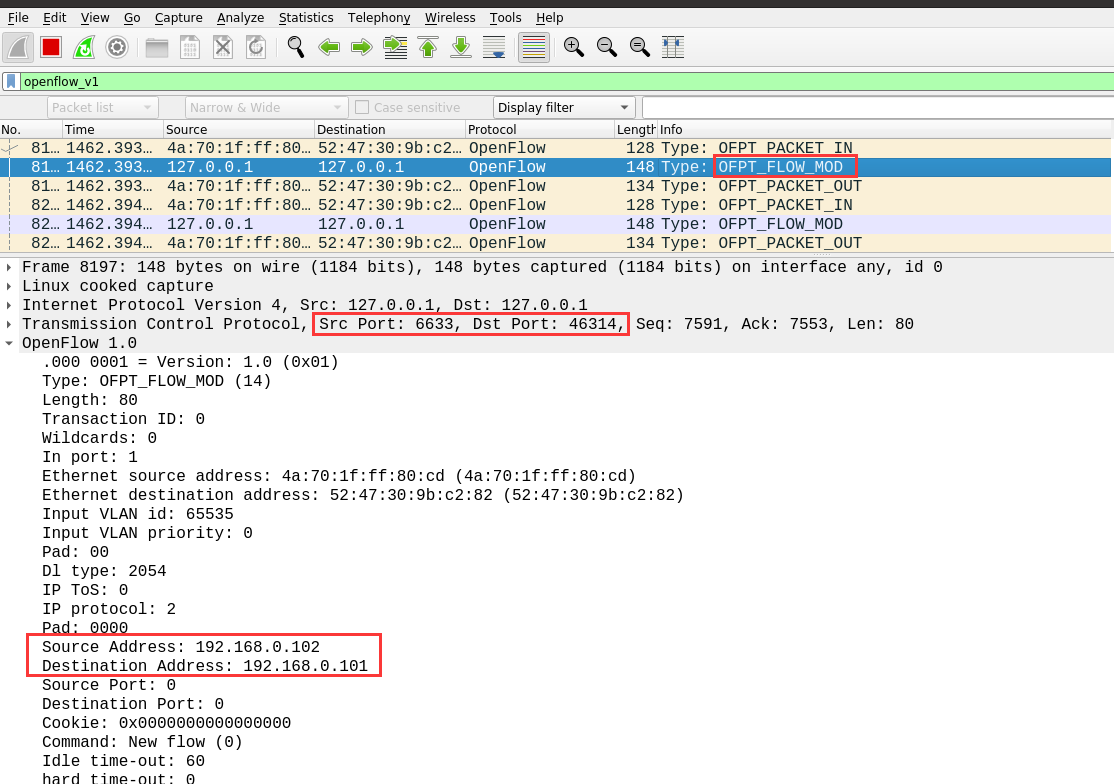
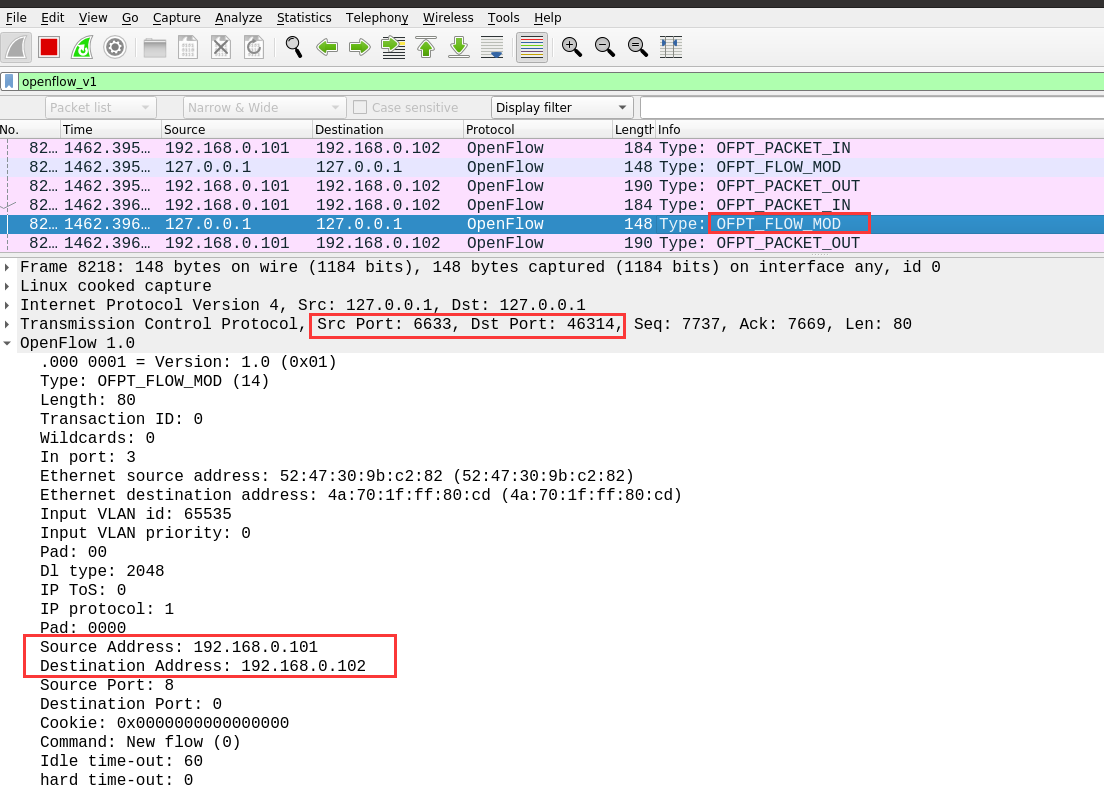
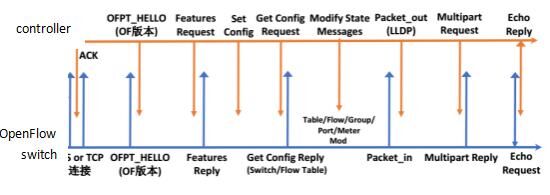
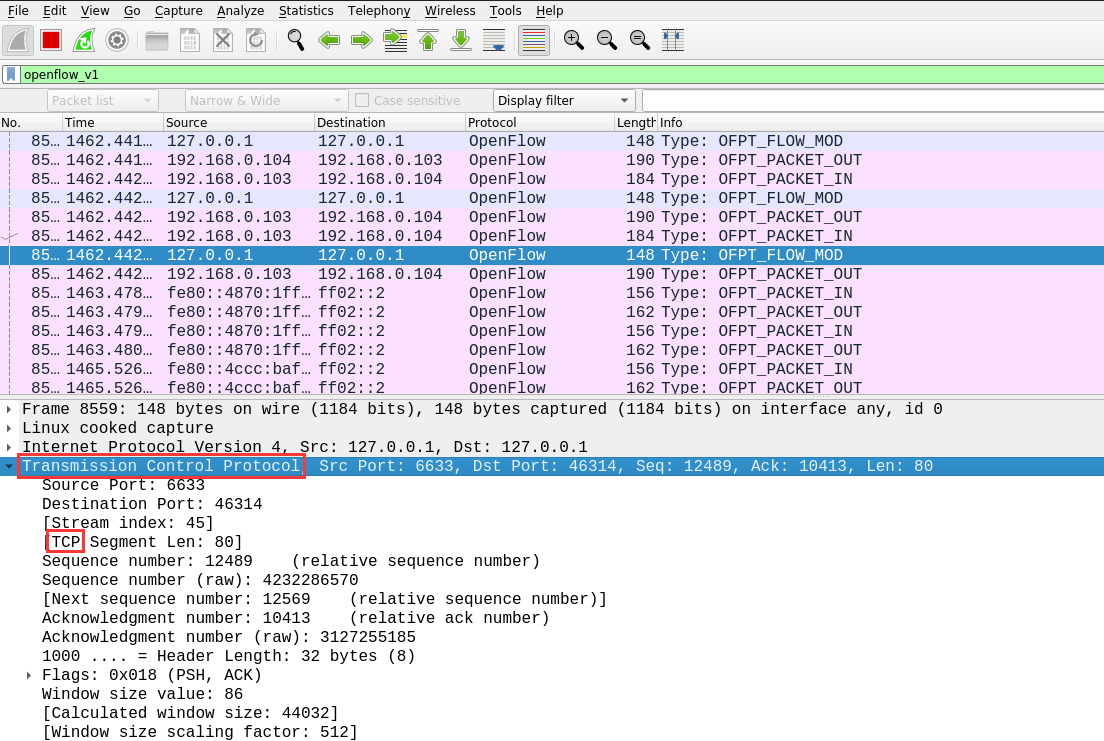
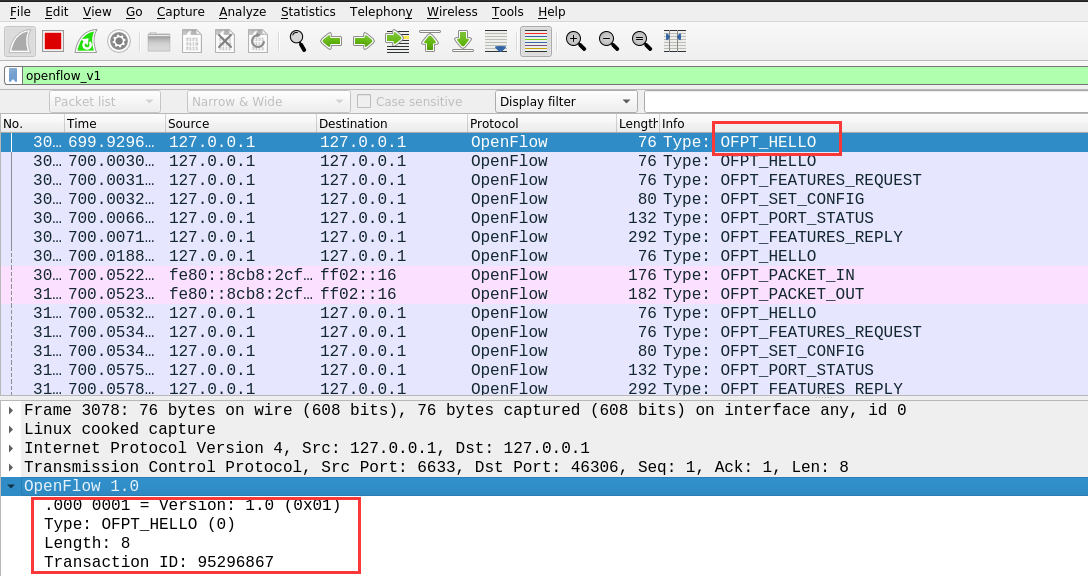
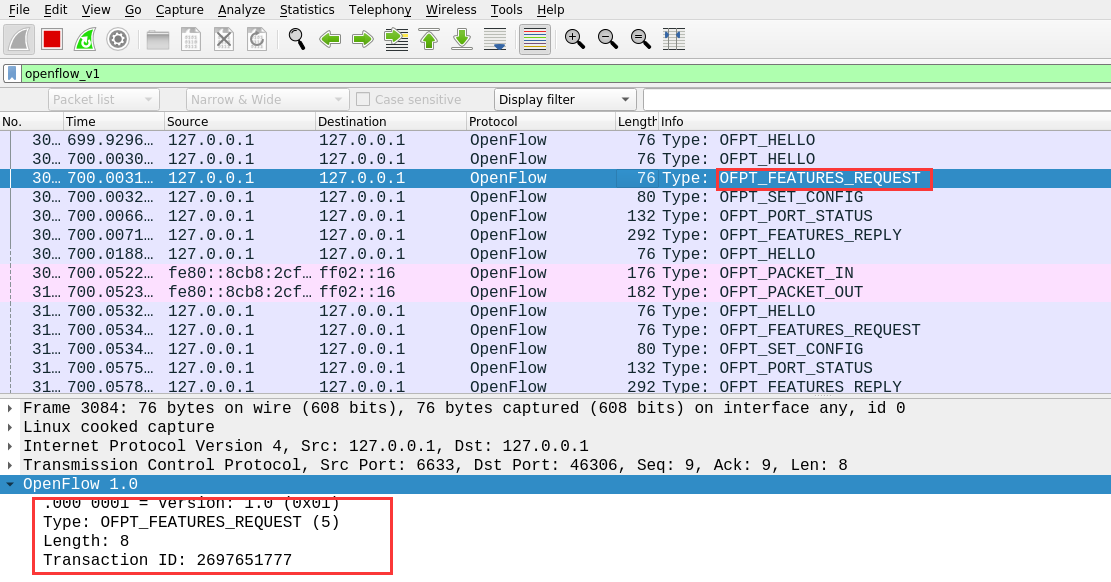

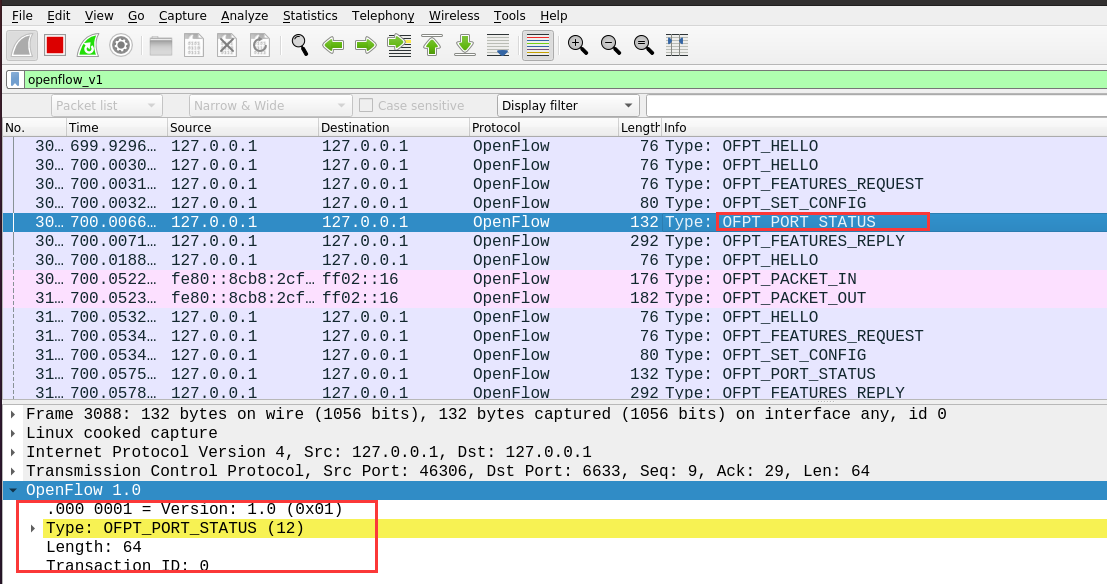
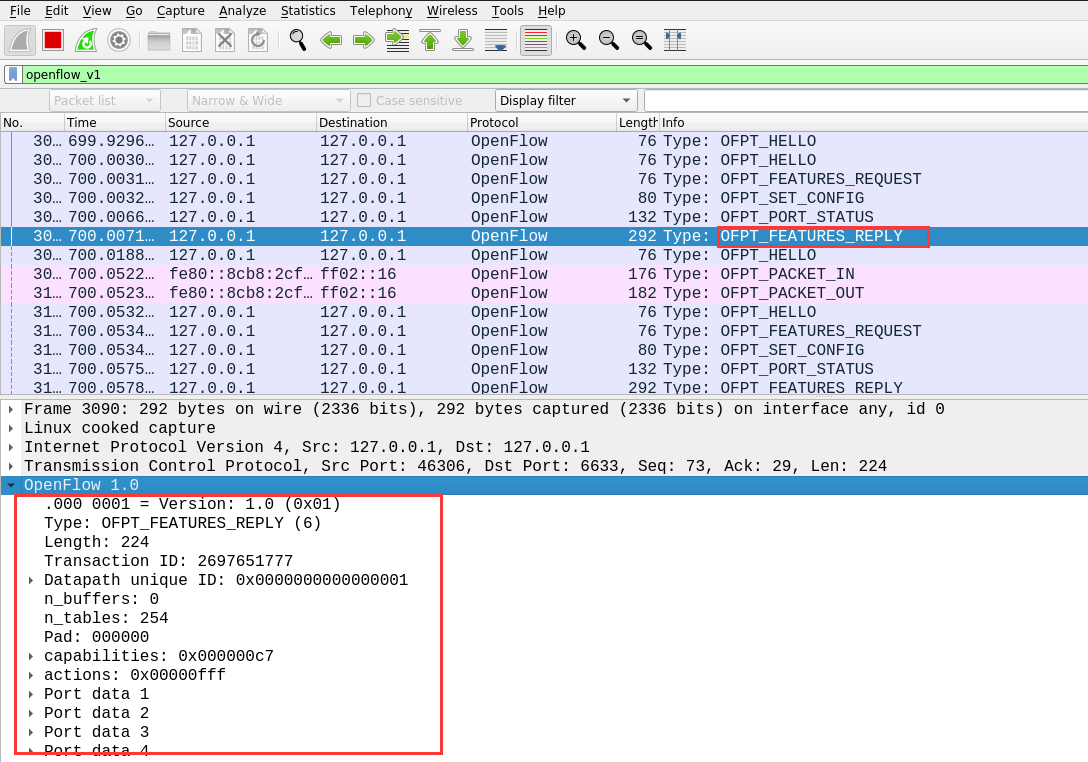
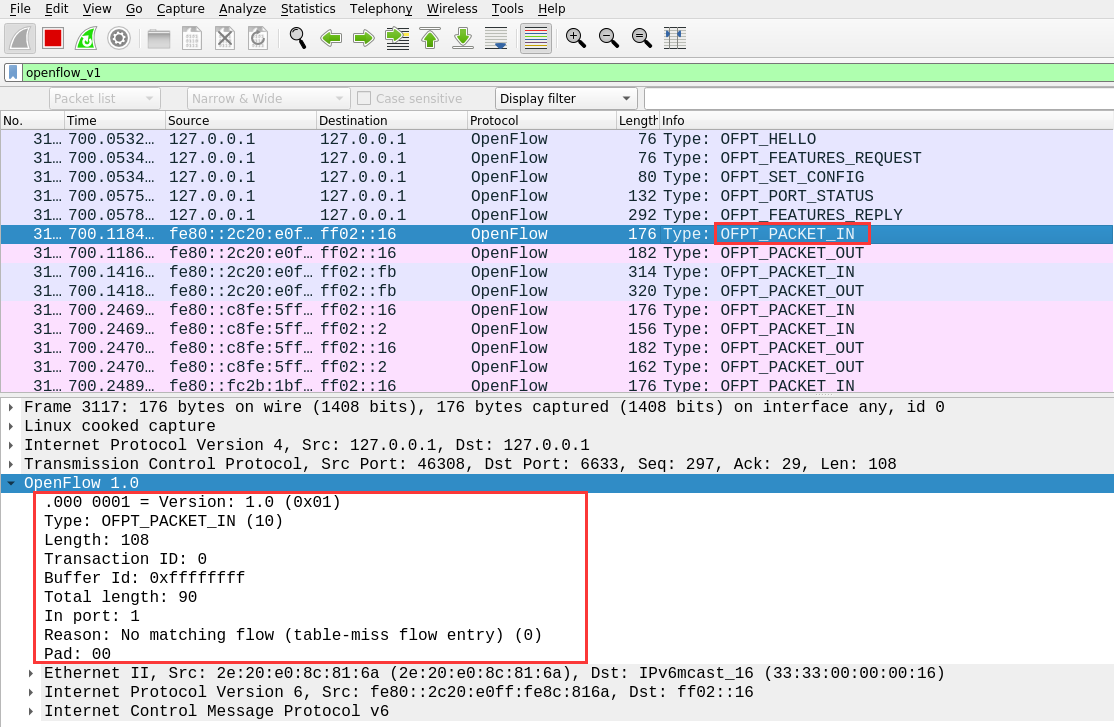
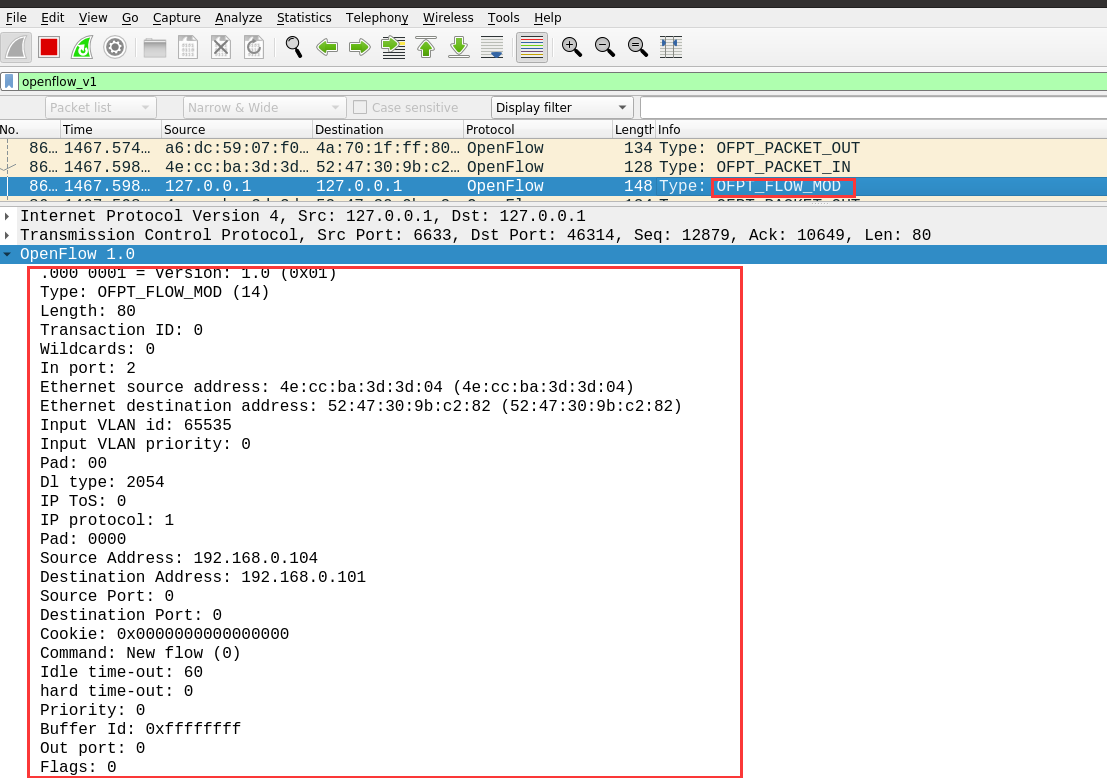
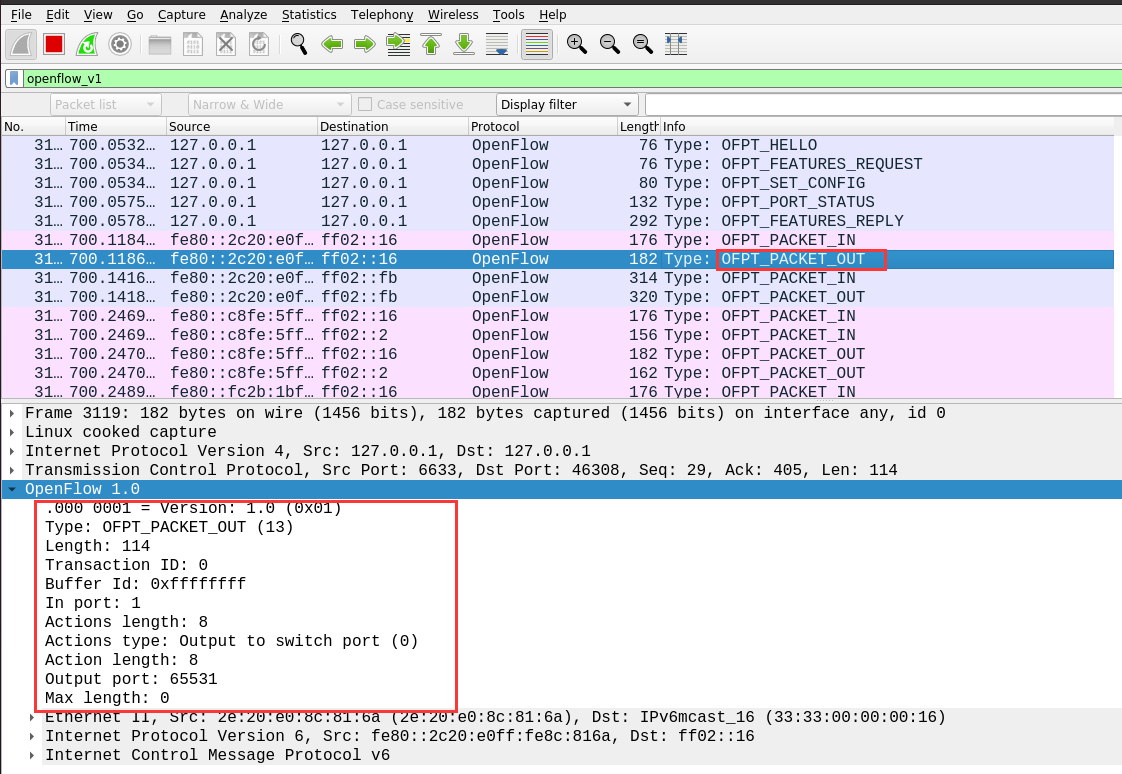


 浙公网安备 33010602011771号
浙公网安备 33010602011771号